Is mass tourism ruining the charm of your dream destinations? It certainly can, but SIXT.VN offers solutions to help you explore Vietnam responsibly and sustainably. Discover insider tips for mindful travel, plus convenient services like airport transfers, hotel booking, and curated tours, ensuring an authentic and enjoyable experience. Embrace sustainable travel practices and uncover hidden gems with responsible tourism in Vietnam.
1. What Exactly Is Mass Tourism and Why Is It So Popular?
Mass tourism refers to the phenomenon of large numbers of people visiting the same destinations, often driven by affordable travel packages and a desire to see popular attractions. The popularity of mass tourism stems from its affordability and accessibility. Inexpensive flights, budget-friendly package tours, and all-inclusive resorts make travel accessible to a broader range of people. According to a report by the United Nations World Tourism Organization (UNWTO) in 2018, international tourist arrivals reached 1.4 billion, indicating the sheer scale of mass tourism.
1.1. What Are the Positive Impacts of Mass Tourism?
Mass tourism can generate jobs, stimulate economies, and foster infrastructure development. The influx of tourists supports local businesses, creates employment opportunities in hospitality and related sectors, and encourages investments in infrastructure to accommodate the growing number of visitors. The Vietnam National Administration of Tourism reported a 20% increase in tourism revenue in 2019, highlighting the potential economic benefits.
1.2. What Are the Negative Impacts of Mass Tourism?
Despite its potential benefits, mass tourism can strain resources, damage the environment, and disrupt local communities. Overcrowding can lead to the degradation of natural sites, depletion of resources like water and energy, and increased pollution. Local cultures can be commodified, and residents may face displacement due to rising living costs.
2. How Does Overtourism Affect Destinations Around the World?
Overtourism, the point at which tourism’s impact becomes unsustainable, has become a pressing issue in many beloved destinations. The rise in tourism is negatively impacting local communities in some of the world’s most beloved travel destinations. From environmental degradation to cultural disruption and economic imbalances, the effects of overtourism are far-reaching. Here’s how overtourism affects destinations in Africa, Asia, Australia, Central/South America, and Europe:
3. Tourism in Africa: Is Mass Tourism a Threat to Local Culture?
Mass tourism is increasingly posing a threat to the unique cultures and environments of African destinations. The influx of tourists can lead to the commodification of local traditions, increased strain on resources, and environmental degradation.
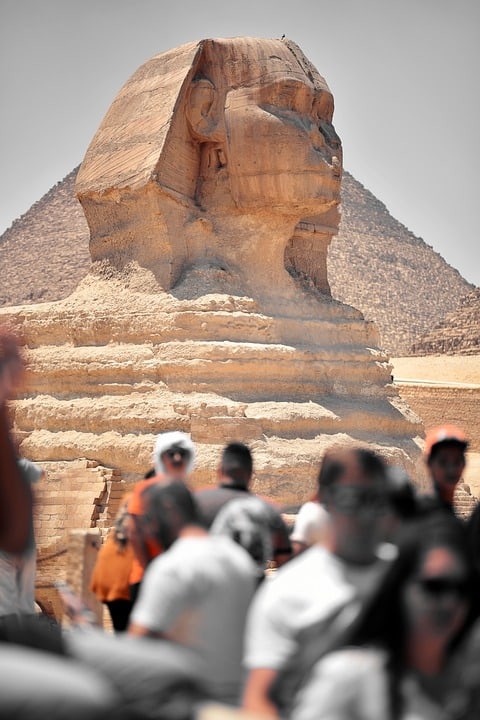 Crowds of tourists at the Pyramids of Giza, Egypt
Crowds of tourists at the Pyramids of Giza, Egypt
3.1. Cairo/Giza (Egypt): How Has Mass Tourism Changed These Historic Sites?
Mass tourism has transformed Cairo and Giza, inundating these historic sites with tourists and leading to congested roads and exploitative industries. According to the Egyptian Ministry of Tourism, the pyramids receive over 14 million visitors annually. This intense influx of tourists has congested roads, attracted unethical practices like aggressive touts and papyrus factory tours, and created an economic imbalance.
3.2. Marrakech (Morocco): What Is the Cost of Tourism on Local Resources?
The surge in tourism in Marrakech has strained resources and infrastructure, increasing the cost of basic goods and threatening the city’s traditional way of life. In just 10 years, Marrakech’s population has surged from approximately 500,000 to over 1.2 million. This growth, coupled with a dramatic rise in tourist arrivals (from under 3 million in 2008 to nearly 11 million last year), has created significant pressure on the city.
3.3. Mauritius: Is This Island Paradise Losing Its Natural Habitat?
With over a million tourists visiting annually, Mauritius is struggling to preserve its natural habitat amidst high population density and luxury resorts. Mauritius, with around 1.3 million residents in 790 square miles, is one of the most densely populated countries in the world. The island’s natural habitat is diminishing rapidly, with luxury resorts dominating coastal areas.
3.4. Cape Town (South Africa): How Is Overtourism Impacting Property Prices?
Overtourism in Cape Town has driven up property prices, widened the gap between rich and poor, and increased traffic and petty crime. With the increasing popularity of Cape Town as a holiday hotspot, there has been a significant increase in property prices, making it difficult for locals to afford homes. According to property analysts at Property 24, property prices in Cape Town have risen by over 60% in the last decade.
4. Tourism in Asia: What Are the Environmental and Cultural Impacts?
Asia’s iconic destinations are grappling with overtourism, leading to environmental degradation, cultural commodification, and strain on local resources.
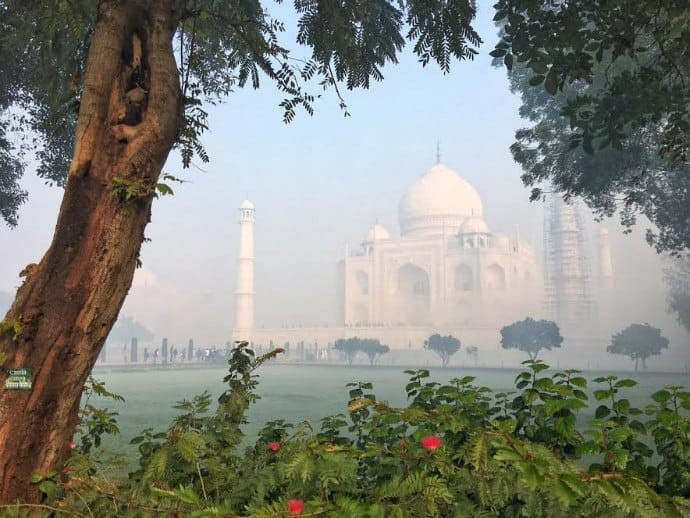 Over tourism at the Taj Mahal
Over tourism at the Taj Mahal
4.1. Agra/Taj Mahal (India): Is Pollution Threatening This World Wonder?
Pollution and overcrowding are degrading the Taj Mahal and the city of Agra, despite the monument’s stringent management and upkeep. With 7 to 8 million people visiting the Taj Mahal each year, the city struggles to manage the influx of tourists. Pollution poses a significant threat to the monument, leading to the need for regular mudpack treatments to clean the surface.
4.2. Bagan (Myanmar): How Are Disrespectful Tourists Damaging Ancient Pagodas?
Disrespectful tourists are damaging Bagan’s ancient pagodas by climbing on them, causing erosion and insulting the site’s historic importance. Travelers often climb the ancient brick formations to the tip of the pagodas, causing them to crumble. This behavior is disrespectful to the historic importance of the site and has resulted in several accidents.
4.3. Bali (Indonesia): Has Uncontrolled Development Ruined This Tropical Paradise?
Uncontrolled development in Bali has led to congestion, pollution, and the degradation of beaches, threatening its status as a tropical paradise. Depansar, Bali’s capital, is now congested with traffic and pollution. Most of the beaches are incredibly crowded, and lack of proper waste disposal has turned Kuta Beach into an enormous dump.
4.4. El Nido, Palawan (Philippines): What Are the Consequences of Rapid Tourism Growth?
Rapid tourism growth in El Nido has led to tourism development, food shortages, and sewage problems, threatening the island’s pristine environment. The influx of over 200,000 visitors to an area with a population of 36,000 has led to problems such as tourism development, food shortages, and a lack of waste water management. Sewage from newly constructed hotels goes straight into the ocean.
4.5. Halong Bay (Vietnam): Can This UNESCO Site Recover From Environmental Damage?
Overtourism in Halong Bay has resulted in environmental issues and fatal accidents due to irresponsible tour operators and a lack of safety regulations. Hundreds of junk boats ply the waters each day, contributing to environmental destruction. A lack of safety regulations has resulted in accidents, highlighting the need for responsible tour operators.
4.6. Maya Bay, Koh Phi Phi (Thailand): Is This Beach No Longer a Paradise?
Maya Bay is overcrowded and polluted, with drunken tourists leaving litter, diminishing its beauty and appeal. The bay is often packed with long-tail boats and people, many of whom are rowdy and obnoxiously drunk, leaving a trail of litter.
4.7. Perhentian Islands (Malaysia): Are These Tropical Islands Losing Their Natural Balance?
The Perhentian Islands are suffering from overdevelopment and pollution, threatening their pristine beauty and natural balance. The islands are becoming a victim of their own success, with more and more tourism-related development taking place. This is leading to issues such as brown patches floating in the ocean and an increase in speedboat traffic.
SIXT.VN’s Solution: Looking for a more responsible way to explore Vietnam? SIXT.VN offers eco-friendly tour options and transportation services that minimize your environmental footprint. We partner with local businesses committed to sustainability, ensuring your visit benefits the community and preserves the natural beauty of destinations like Halong Bay. Contact us at Hotline/Whatsapp: +84 986 244 358 or visit our website SIXT.VN to learn more.
5. Tourism in Australia: Is Uluru Being Damaged by Mass Tourism?
Mass tourism has caused numerous issues at Uluru (Ayers Rock), provoking debates over whether tourists should be allowed to climb it.
5.1. Uluru (Australia): Should Tourists Be Allowed To Climb This Sacred Site?
Tourists have been defecating, urinating, leaving trash, and vandalizing the rock face at the top of Uluru for years, prompting a ban on climbing. Visitors have also been chipping off stones and defacing culturally significant engravings with name carvings of their own.
6. Tourism in Central/South America: Is Tourism Contributing to Gentrification?
Tourism in Central and South America is contributing to gentrification, environmental degradation, and cultural commodification, threatening the authenticity of local communities.
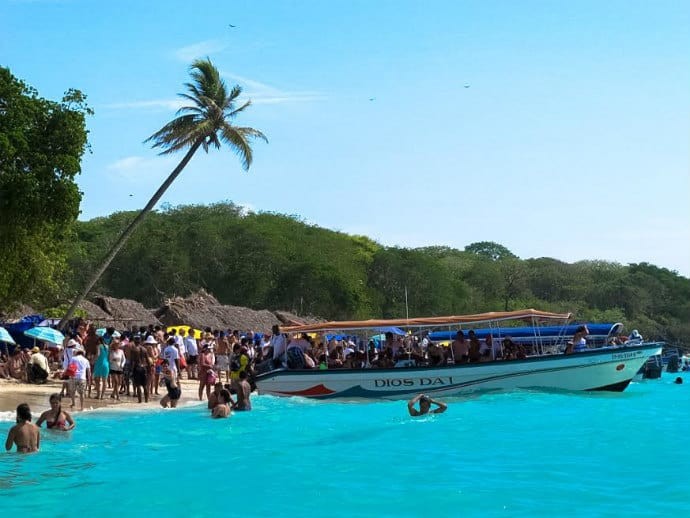 Over tourism in Cartagena, Columbia
Over tourism in Cartagena, Columbia
6.1. Cartagena (Colombia): How Is Gentrification Affecting Local Life?
The desire to cater to tourists has led to the gentrification of Getsemaní, with rising property prices and the displacement of locals. The development of this ultra-hip neighborhood is largely being funded by international companies, who seem hell-bent on tourism profits regardless of the impact on the locals who live there.
6.2. Easter Island (Chile): Can the Island’s Resources Support the Growing Number of Tourists?
The fragile Moai are being damaged by tourists, and the island’s resources are strained by the growing influx of visitors. The Moai are very fragile, and tourists who touch the statues cause irreversible damage. Two important archaeological sites were closed to tourists in recent years due to deterioration.
6.3. Machu Picchu/Inca Trail (Peru): What Measures Are Being Taken To Preserve This Site?
Strict caps on visitors and new restrictions are being implemented to preserve Machu Picchu and the Inca Trail from the negative impacts of overtourism. Irresponsible travelers have been ruining the natural beauty with selfie sticks. There’s toilet paper lining the hiking trails, squat toilets overflowing, and now the preservation of this precious site seems to be in danger.
6.4. Salar de Uyuni (Bolivia): How Has Mass Tourism Impacted This Natural Wonder?
Mass tourism has led to unmanaged waste, environmental impacts from hundreds of 4x4s, and increased competition among local tour operators. The number of visitors from the Uyuni departure point have far surpassed local infrastructure in recent years, and the city suffers from unmanaged waste.
7. Tourism in Europe: How Can Cities Balance Tourism and Local Life?
European cities are struggling to balance the economic benefits of tourism with the negative impacts on local life, leading to measures like tourist bans and regulations.
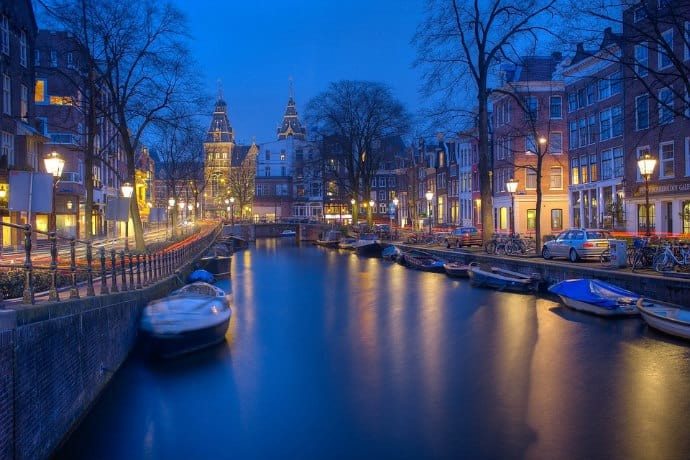 Amsterdam -crowded mass tourism playground
Amsterdam -crowded mass tourism playground
7.1. Amsterdam (Netherlands): How Is the City Combating Mass Tourism?
The government has banned new tourist-oriented shops and is regulating Airbnb to combat overtourism and address the housing crisis. The rise in tourism has made it very difficult for local residents in the Centre to find shops to do their errands in.
7.2. Barcelona (Spain): How Has Tourism Affected the City’s Authenticity?
Overtourism is forcing out locals, replacing local shops with souvenir shops, and killing the area’s authenticity. A large number of these visitors are day-trippers, coming into the city on cruise ships carrying up to 5,000 passengers, all of whom descend on the nearby old town en masse.
7.3. Cinque Terre (Italy): Is Mass Tourism Destroying These Quaint Villages?
Cinque Terre’s quaint villages are overrun with tourists, putting a strain on the area’s resources and diminishing the local way of life. The narrow, historic centre streets were a shuffling mass of bodies, litter was everywhere, and people treated local homes as if they were museums, walking in and posing for pictures.
7.4. Dubrovnik (Croatia): Can the City Recover Its Original Spirit?
The sea of mass tourism is pushing Dubrovnik far beyond its carrying capacity, increasing living expenses and threatening the city’s original spirit. Residents reclaim Dubrovnik in the winter months. The town celebrates local pride with holidays like St. Blaise Day and Badnjak, which are filled with dancing, eating, and singing traditional Croatian songs. This is when the city’s culture truly shines.
7.5. Iceland: How Is Iceland Managing the Influx of Tourists?
Tourists arrive to find hotels and car rentals are expensive and in increasingly short supply during the high season (from June to August). In June 2016, the situation was so chaotic that the government planned to restrict Airbnb rentals. Other measures to reduce the number of visitors are planned to be implemented soon.
7.6. Isle of Skye (Scotland): What Steps Are Being Taken To Protect the Island?
Accommodations are seriously limited, which has caused the police to limit island visits to those with reservations only. Responsible tourism to Skye is still possible. Allow yourself to go off the beaten path and support local businesses who give back to the community and act for the environment. Treat the island as if it was your home.
7.7. Lisbon (Portugal): Is the City Losing Its Cultural Identity?
The housing crisis, driven by short-term rentals, is stripping Lisbon’s old quarters of their cultural identity. The housing crisis has been the biggest issue facing Lisbon. Locals can’t find affordable houses in the center of the city because landlords can make more money by listing their apartments on short-term rental websites.
7.8. Prague (Czech Republic): How Has Overtourism Changed This Fairytale Destination?
Overtourism has clouded Prague’s fairytale charm, making the city crowded and expensive for both tourists and locals. The city is crowded no matter what time year you visit, with people and vendors elbow to elbow on the Charles Bridge. New developments are often under construction, which detracts from the city’s beauty. Prague has also become more expensive, both for tourists and locals alike.
7.9. Santorini (Greece): How Can Tourists Avoid the Crowds?
Avoiding the Santorini crowds completely is almost impossible, especially if you hope to view the sunset in iconic spots like Oia. However, the island’s east-facing side affords equally beautiful views, and the gorgeous resorts there are more affordable and just as luxurious.
7.10. Svaneti (Georgia): Is Tourism Threatening This Remote Region’s Charm?
New concrete guesthouses are being built randomly, without any permission. But they’re incompatible with the local cultural and architectural heritage and ultimately spoil the picturesque landscape. Farmland has been reduced to build new accommodations and ski facilities, causing problems with local food supplies.
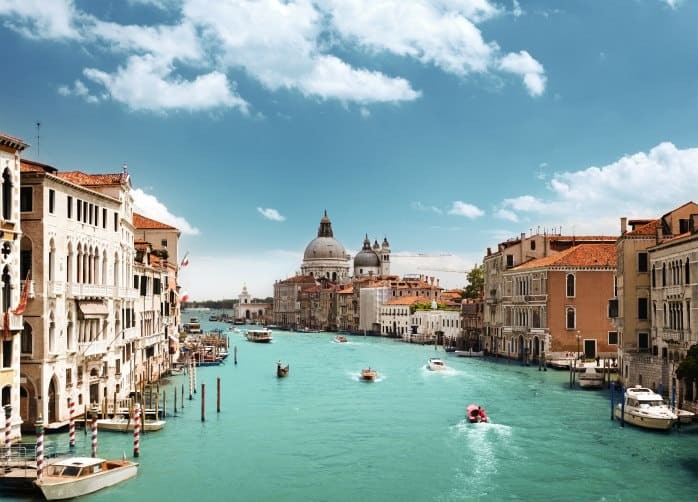 Venice -Ruined By Over Tourism
Venice -Ruined By Over Tourism
7.11. Venice (Italy): What Can Be Done To Preserve This Charming City?
A city that only in-habits under 55,000 residents yet welcomes over 30 million visitors a year. Venice and its Lagoon have long been listed as a UNESCO World Heritage Site. Mass tourism means the city risks losing its status.
8. Tourism in North America: What Are the Consequences of Mass Tourism?
Mass tourism in North America has led to environmental damage, strained resources, and altered local communities, highlighting the need for responsible travel practices.
8.1. Denali National Park, Alaska (USA): How Has Tourism Changed This Wilderness?
Denali National Park has been impacted by tourism development, with luxury resorts and boardwalk malls replacing the park’s wild nature. Today you’ll find luxury resorts, a Good Sam Park, and a boardwalk mall with fast food and ice cream joints. You have to wait in a line of jostling tourists to enter the park on one of the park’s buses.
8.2. Banff, Alberta (Canada): Has Overtourism Affected the Quality of Life for Locals?
Overtourism has turned Banff from a quaint skiing community into a churn-and-burn business more focused on pleasing tourists than providing an affordable quality of life for locals. The extreme popularity of the destination and the limits on expansion means that the town’s limited real estate is extremely expensive and almost entirely devoted to high-end tourism.
8.3. Manhattan, New York City (USA): How Many Millions Are Too Many?
Parts of Manhattan have hit their carrying capacity, raising questions about the economic impact and the quality of the tourism experience. There are vital questions about the degree to which the money tourists spend in Manhattan adds to the local economy.
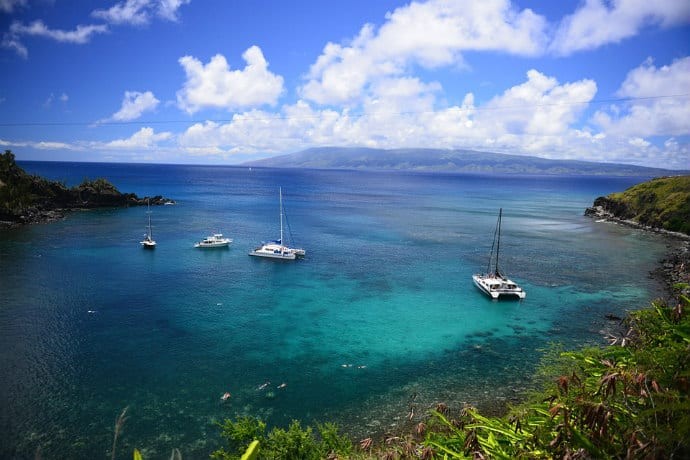 Maui -shows negative environmental impact of tourism
Maui -shows negative environmental impact of tourism
8.4. Maui, Hawaii (USA): How Is Tourism Impacting the Island’s Ecosystem?
Maui sees around 3 million tourists each year, driving up local prices, crowding popular areas, and causing environmental degradation. One especially egregious example of the effects of tourism on Maui is Molokini. This tiny, fingernail-shaped atoll just off the coast of Maui is a popular spot for snorkeling.
8.5. Yellowstone National Park (USA): What Are the Problems Caused by Increased Tourism?
In the last 10 years, tourism has increased by 40%, with over 4.2 million visiting the park in 2016. This dramatic increase has caused numerous tourism problems. Poorly informed visitors will involve themselves in an “animal rescue” rather than letting nature take its course.
8.6. Yucatan Peninsula (Mexico): What Are the Effects of Uncontrolled Tourism?
From Playa del Carmen to Cancun, the uncontrolled surge of tourism to the Yucatan Peninsula has turned much of the region into one massive all-inclusive resort. Uncontrolled tourism has had a negative impact, and let that guide your spending. Dine at local restaurants. Shop at locally-owned businesses. Chat to local people.
9. How Can Travelers Help Reduce The Negative Impacts of Mass Tourism?
To minimize your negative impact and promote sustainable tourism, consider the following:
- Travel during the off-season: Avoid peak seasons to reduce crowds and support local businesses during slower periods.
- Choose eco-friendly accommodations: Opt for hotels and guesthouses committed to sustainability and responsible practices.
- Support local businesses: Patronize locally-owned restaurants, shops, and tour operators to boost the local economy.
- Respect local culture: Be mindful of local customs and traditions, and avoid activities that exploit or commodify them.
- Minimize your environmental footprint: Reduce waste, conserve water and energy, and avoid damaging natural habitats.
10. How Can SIXT.VN Help You Travel Responsibly in Vietnam?
SIXT.VN is dedicated to providing travelers with sustainable and responsible tourism options in Vietnam. Our services are designed to minimize negative impacts while ensuring an authentic and enjoyable experience.
10.1. Sustainable Tour Options
We partner with local tour operators committed to environmental conservation and community engagement. Our tours focus on preserving natural sites, supporting local communities, and promoting cultural understanding.
10.2. Eco-Friendly Transportation
SIXT.VN offers transportation options that minimize environmental impact. From hybrid vehicles to bicycle rentals, we help you explore Vietnam in a sustainable way.
10.3. Support for Local Communities
We prioritize partnerships with local businesses and organizations that contribute to community development. By choosing SIXT.VN, you directly support local economies and help preserve cultural traditions.
10.4. Expert Travel Advice
Our team of travel experts provides personalized advice on responsible travel practices. We can help you plan itineraries that minimize your environmental footprint and maximize your positive impact.
By choosing SIXT.VN, you can explore Vietnam responsibly, support local communities, and preserve the country’s natural beauty.
Ready to travel responsibly? Contact SIXT.VN at Address: 260 Cau Giay, Hanoi, Vietnam; Hotline/Whatsapp: +84 986 244 358; Website: SIXT.VN to plan your sustainable adventure in Vietnam today. Discover the magic of Vietnam while making a positive impact on the environment and local communities.
FAQ: Addressing Your Concerns About Mass Tourism in Vietnam
1. What is mass tourism and why is it a problem?
Mass tourism involves large numbers of people visiting the same attractions, often at the same time. This can lead to overcrowding, environmental damage, and strain on local resources.
2. How does overtourism affect local communities in Vietnam?
Overtourism can drive up prices, displace residents, and commodify local culture. It also puts pressure on infrastructure and can lead to environmental degradation.
3. Which destinations in Vietnam are most affected by mass tourism?
Popular destinations like Halong Bay, Sapa, and Hoi An are particularly vulnerable to the negative impacts of mass tourism.
4. What are some responsible travel practices I can follow in Vietnam?
Travel during the off-season, choose eco-friendly accommodations, support local businesses, respect local culture, and minimize your environmental footprint.
5. How can SIXT.VN help me travel responsibly in Vietnam?
SIXT.VN offers sustainable tour options, eco-friendly transportation, and partnerships with local communities to promote responsible travel.
6. What types of sustainable tours does SIXT.VN offer?
We offer tours that focus on preserving natural sites, supporting local communities, and promoting cultural understanding.
7. How does SIXT.VN minimize environmental impact through transportation?
We offer options like hybrid vehicles and bicycle rentals to reduce your carbon footprint while exploring Vietnam.
8. How does SIXT.VN support local communities in Vietnam?
We prioritize partnerships with local businesses and organizations that contribute to community development, ensuring your travel benefits the people and places you visit.
9. Can SIXT.VN help me plan a personalized responsible travel itinerary?
Yes, our team of travel experts can provide personalized advice and help you plan itineraries that minimize your environmental footprint and maximize your positive impact.
10. How do I contact SIXT.VN to book a responsible tour or service?
You can reach us at Address: 260 Cau Giay, Hanoi, Vietnam; Hotline/Whatsapp: +84 986 244 358; Website: SIXT.VN to plan your sustainable adventure in Vietnam today.



